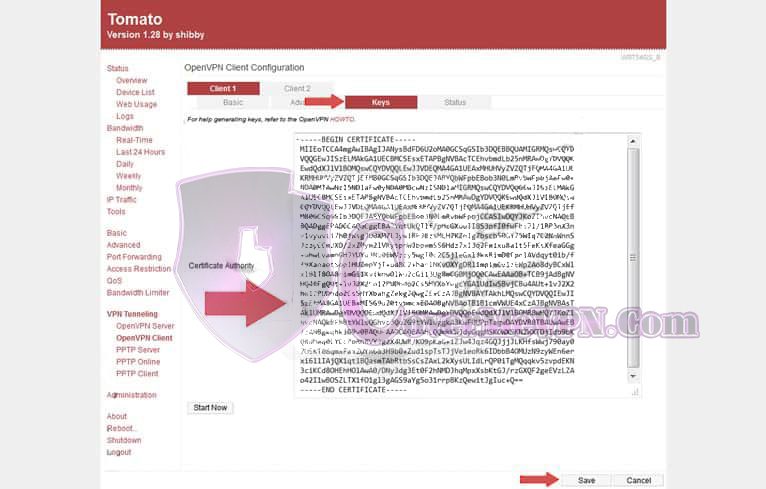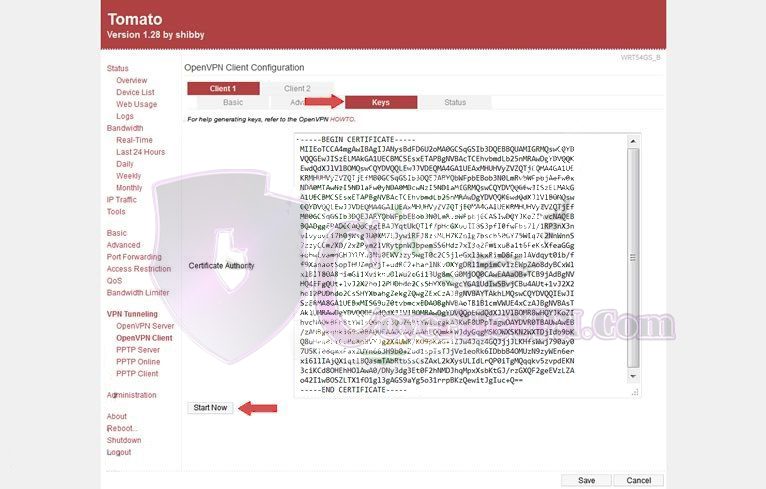Under the Keys tab, paste in the certificate
After you are finished, click “Save” at the bottom-right.
It takes more than a private internet browser to go incognito. We’ll make your real IP address.
Unprotected
Tomato router OpenVPN setup with CoverMeVPN is a great way to secure your whole network and enjoy unlimited internet access. This guide will take you through the easy steps to configure your Tomato router for OpenVPN, making sure all your connected devices get encrypted traffic and better privacy. With CoverMeVPN’s strong OpenVPN protocol, you get solid encryption, reliable performance, and the ability to bypass geo-restrictions. Whether you want to keep your data safe on lots of devices or easily access stuff from around the world, this setup will give your whole household a secure and private browsing experience with CoverMeVPN.
On your standard web browser, go to your router’s settings page or control panel (Default address is 192.168.1.1, unless changed)
On your router’s control panel, click on the VPN Tunneling tab, and then select OpenVPN Client.
Under the Basic tab, make the following changes:
After you are finished, click “Save” at the bottom-right.

Under the advanced tab, make the following changes:
After you are finished, click “Save” at the bottom-right.

Under the Keys tab, paste in the certificate
After you are finished, click “Save” at the bottom-right.

Under the Keys tab, hit the Start button to begin the OpenVPN service.
Wait for the service to start.

We now want to make sure that the router start up with OpenVPN. In the side bar, click on “Reboot.”
Next, click on OK.

Wait for the router to reboot.

Some distributions of Tomato may require you to hit “Continue” before the router finishes booting.

We can now check to see if OpenVPN is running.
In the side bar, click on “VPN Tunneling,” and then “OpenVPN Client.”
Click on the “Status” tab. You should see statistics appear. As you use the service, the bytes transferred will increase.

